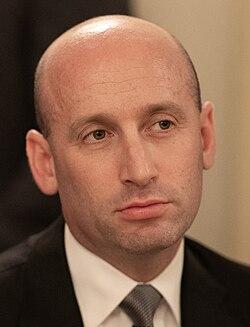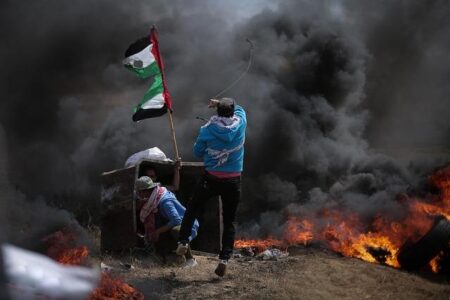Stephen Miller, a senior advisor known for his hardline views on immigration and law enforcement, recently questioned when the United States has historically permitted “riotous assemblies.” His remarks sparked a swift and widespread reaction online, with social media users and commentators challenging his interpretation of American civil liberties and the right to protest. This exchange highlights ongoing tensions around public demonstrations and governmental responses, as the debate over the limits of free assembly continues to resonate across the nation.
Stephen Miller’s controversial remarks on riotous assemblies spark widespread backlash
Stephen Miller’s recent comments questioning when the United States has ever permitted what he described as “riotous assemblies” have ignited a firestorm of criticism across social media and public discourse. Critics argue his remarks overlook the complex history of civil rights protests, labor strikes, and demonstrations that have shaped American democracy. Many see his stance as an attempt to delegitimize peaceful protests by framing all public dissent as inherently violent or unlawful. The backlash intensified as users on Twitter and other platforms shared historical examples and contemporary footage of protests that were overwhelmingly peaceful, emphasizing the necessity of the right to assemble.
Public reactions highlighted several key points:
- Historical precedent supports the legality and importance of assemblies, even if some have turned confrontational.
- Equating all protests with riots risks eroding First Amendment protections.
- Calls for policy reform focused on addressing root causes rather than blanket condemnation of dissent.
| Aspect | Stephen Miller’s View | Public/Expert Response |
|---|---|---|
| Definition of Riotous Assemblies | Any large public dissent equates to a riot | Distinguish between peaceful protests and actual violence |
| Legal Perspective | Limited occasions for lawful assemblies | Protected right unless violence or property destruction occurs |
| Impact on Free Speech | Risk of disorder justifies restrictions | Free speech must be safeguarded to promote democracy |
Historical context and legal definitions challenge Miller’s interpretation of public protests
Stephen Miller‚Äôs query on when the US has officially sanctioned “riotous assemblies” overlooks the complex evolution of protest rights framed by both historical events and legal interpretations. Throughout American history, demonstrations have oscillated between celebrated democratic expressions and criminalized disturbances, often influenced by political climate and societal norms. From the Shays’ Rebellion in the 1780s to the civil rights marches of the 1960s, protests have been a cornerstone for change, even when met with resistance or labeled as unlawful. Notably, US courts have consistently navigated these tensions by distinguishing protected speech from genuine threats to public safety, a nuance Miller‚Äôs broad terminology fails to address.
Legal definitions surrounding public protests further complicate Miller’s stance, as statutes vary greatly by jurisdiction and circumstance. For instance, an assembly may fall under “peaceful protest” or be deemed “riotous” based on actions occurring rather than mere intent. The following table highlights key legal criteria typically considered in determining the status of an assembly:
| Criteria | Peaceful Assembly | Riotous Assembly |
|---|---|---|
| Intent | Express grievances without violence | Intent to incite disorder or violence |
| Behavior | Non-violent, orderly gathering | Destructive acts, intimidation, or threats |
| Law enforcement response | Monitoring and facilitation | Intervention and potential arrests |
Public sentiment and online discourse have underscored the danger of conflating legitimate protest with ‘riotous’ conduct, warning of reductive narratives that can erode civil liberties. Critics argue that Miller’s framing ignores historical patterns where official labeling was used to suppress dissent, emphasizing the need for nuanced understanding rather than blanket assertions.
Public and expert reactions highlight the complexity of First Amendment rights
Public and expert responses to Stephen Miller’s query about the historic allowance of “riotous assemblies” in the US have illuminated the intricate balance between civil liberties and law enforcement. Many commentators pointed out that peaceful protest is a constitutionally protected right, yet the line blurs when demonstrations turn violent or destructive. Social media quickly filled with examples of past protests, some marked by unrest, illustrating how authorities have historically navigated First Amendment protections in conjunction with public safety concerns.
The debate encompasses more than legality—it touches on societal values and the role of government in regulating speech. Constitutional scholars emphasized that the First Amendment doesn’t protect violent acts cloaked as protest, but also warned against heavy-handed responses that risk undermining democratic freedoms. Critics and supporters alike acknowledged how nuanced this subject is, often presenting it in three distinct dimensions:
- Legal Interpretation: How courts have historically defined “riotous” behavior and incitement.
- Policy Impact: The implications of governmental responses on civil rights.
- Public Perception: How societal attitudes influence enforcement and tolerance of dissent.
| Aspect | Key Point | Example |
|---|---|---|
| Legal | Protected speech vs. incitement | Brandenburg v. Ohio (1969) |
| Policy | Balancing security & civil liberties | Curfews during protests |
| Public | Varied support or condemnation | Social media debates |
Strategies for policymakers to address and de-escalate civil unrest responsibly
Prioritizing open communication and transparency is crucial for policymakers aiming to manage civil unrest without escalating tensions. Authorities should establish clear channels to engage with community leaders and protest organizers before events unfold. This proactive communication helps to address grievances and mitigate misinformation, reducing the likelihood of conflict. Moreover, public statements from officials must reinforce respect for peaceful assembly while condemning violence, striking a delicate balance that acknowledges citizens’ rights and maintains public order.
In addition, deploying trained and restrained law enforcement personnel is essential. Utilizing non-lethal crowd control methods and establishing clear rules of engagement can prevent unnecessary violence. Investment in de-escalation training, cultural competency, and mental health awareness equips officers to respond more effectively to volatile situations. Below is a concise overview of effective tactics for responsible unrest management:
| Tactic | Purpose | Expected Outcome |
|---|---|---|
| Community Dialogue | Bridge gap between authorities and protesters | Reduced tension, mutual understanding |
| Clear Communication | Clarify legal boundaries and consequences | Prevents misunderstandings, limits escalation |
| Non-Lethal Tactics | Maintain order without excessive force | De-escalation and safer protest environment |
Closing Remarks
As Stephen Miller’s remarks sparked a wave of public and online scrutiny, the incident underscores the growing tension surrounding the terminology used by public officials to describe protests and civil unrest. The robust response from social media highlights a broader debate about the right to assemble and the language that shapes public perception. As the conversation continues, it remains clear that any effort to define or restrict protest activity will be met with keen attention and spirited discussion across the nation.




